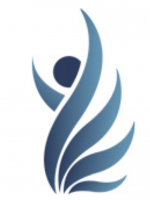The Sign of the Cross
The early Christians involved their whole person in prayer, including their body. The customary posture for prayer was to stand with the hands raised. We still see this ancient posture of prayer in the position of the priest when he prays the Great Thanksgiving Prayer at mass. It is unfortunate that the Protestant Reformation, in reacting against what they viewed as the idolatry and superstition of Catholicism, should have reduced Christian worship to a matter of the tongue and the ears, believing, as they did, that salvation was a solely a matter of the Bible preached and heard. More emotion came into Protestant worship through the singing of psalms and then the hymns of Luther and the German Pietists, and of course the wonderful hymns of John and Charles Wesley that we still sing today.
However, the body still remains largely disengaged in our worship, even more than previously now that kneeling has virtually disappeared in Anglican worship. It seems to me important to recover our worship of God as not just a matter of the mind but something that involves our body also, for we are an embodied species of life and as Christians we believe it is as a body (in some manner) that we shall be resurrected, as we affirm in the creed.
One of the simplest, oldest, and most widespread gestures of prayer in Christianity is the sign of the cross. It is also one of the useful and flexible gestures of prayer and Christian identity, able to be used in church, at home, in private and in public, when we are alone or expressing the solidarity we have with other Christians in making the sign of the cross together. It is a gesture we begin the mass with, as the priest invokes the name of the Holy Trinity; and it is there at the end of mass when the priest blesses us in the name of the same Holy Trinity as we make the sign of the cross. The sign of the cross at those times involves making it across our whole body. However, at the reading of the gospel we make three small signs of the cross over our forehead, our mouth, and our heart. This is a prayer to God that we may understand his word coming to us in the Gospel (our forehead)l, that we may by our understanding be enabled to speak his word to others (our mouth), and that we may ultimately love his word in Holy Scripture (our heart).
The sign of the cross may also become a public sign of our allegiance to Christ, a sort of simple mission statement to others around us. It is used by Catholic Christians before and after grace said in thanksgiving for daily meals. In my stepson’s we do this not just at home but also when we go out to a restaurant for dinner. A short grace using the sign of the cross therefore becomes not only thanksgiving to God for daily food at home, but also a easy way of bringing Christian faith into the public spaces of our life and showing others that we are servants of Christ at all times and places in our day. I strongly encourage you all to do this. It is a simple way of taking Christian faith and worship of God outside the confines of an hour of mass at church in Sundays.
Making the sign of the cross is simple, though our Orthodox brothers and sisters in Christ do it in reverse to us Western Christians. Using your right hand you trace the cross across your upper body, beginning at your forehead, then down to your waist, then across your chest from left to right (the Orthodox go from right to left). I also like to do this like the Russian Orthodox do, using the thumb and two first fingers together as another indication of the three Persons of the Holy and Lifegiving Trinity. It is a common sight in Orthodox churches to see the faithful making the sign of cross repeatedly through the Divine Liturgy, and also when they pray before an icon. As we make the sign of the cross we say to ourselves quietly or silently: ‘In the name of the Father (the forehead), and of the Son (down to the waist), and of the Holy Spirit (left to right across the chest).
We also use the sign of the cross when we come to the time in the mass when we pray for the Faithful Departed and others who have died. At the conclusion of the prayers the person leading our intercessions will ask God: ‘Rest eternal grant to them O God’, and we respond as we make the sign of the cross: ‘And let light perpetual sign on them O Lord’. This little versicle and response is a prayer for the Faithful Departed that expresses very old petitions to God. Similar prayers for peace and refreshment for dead Christians are found in the catacombs of Rome which date back to the first centuries of Christianity. This simple prayer, with the sign of the cross, can be used at any time we feel moved to pray for those who have died. You will notice that we are beginning to do this at mass from this month on.
September 2020
